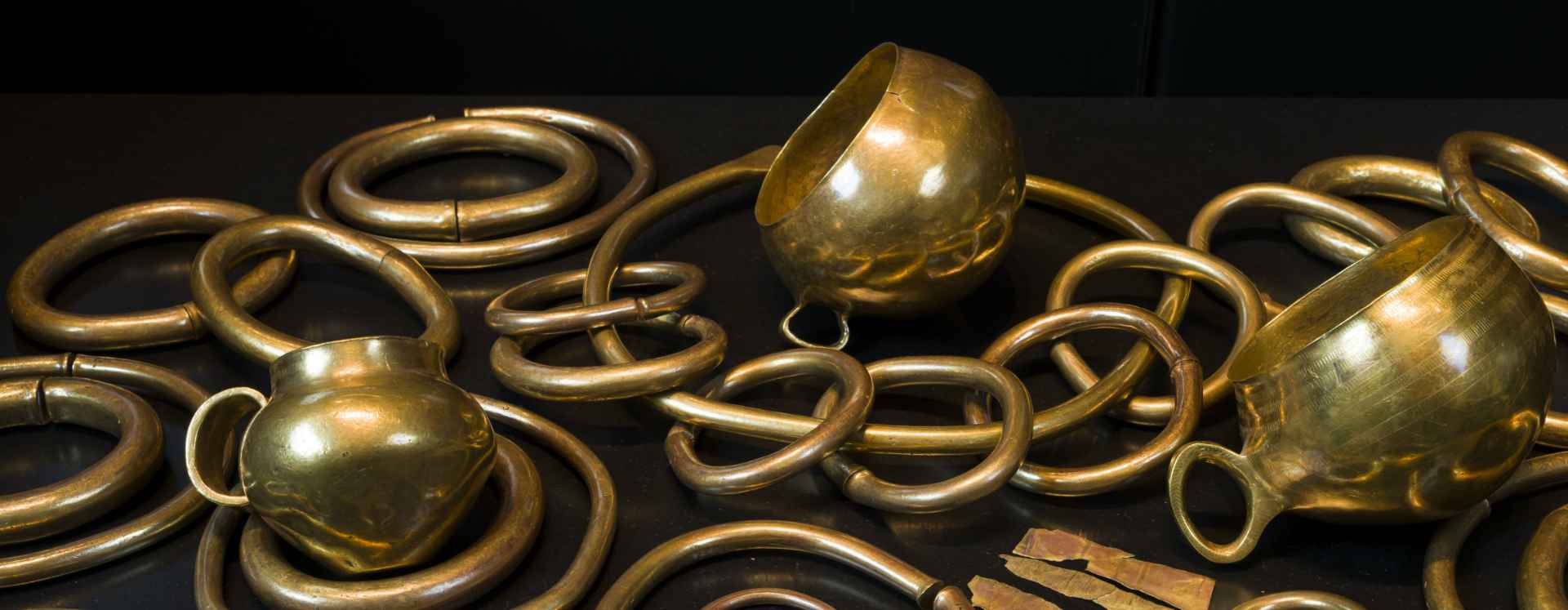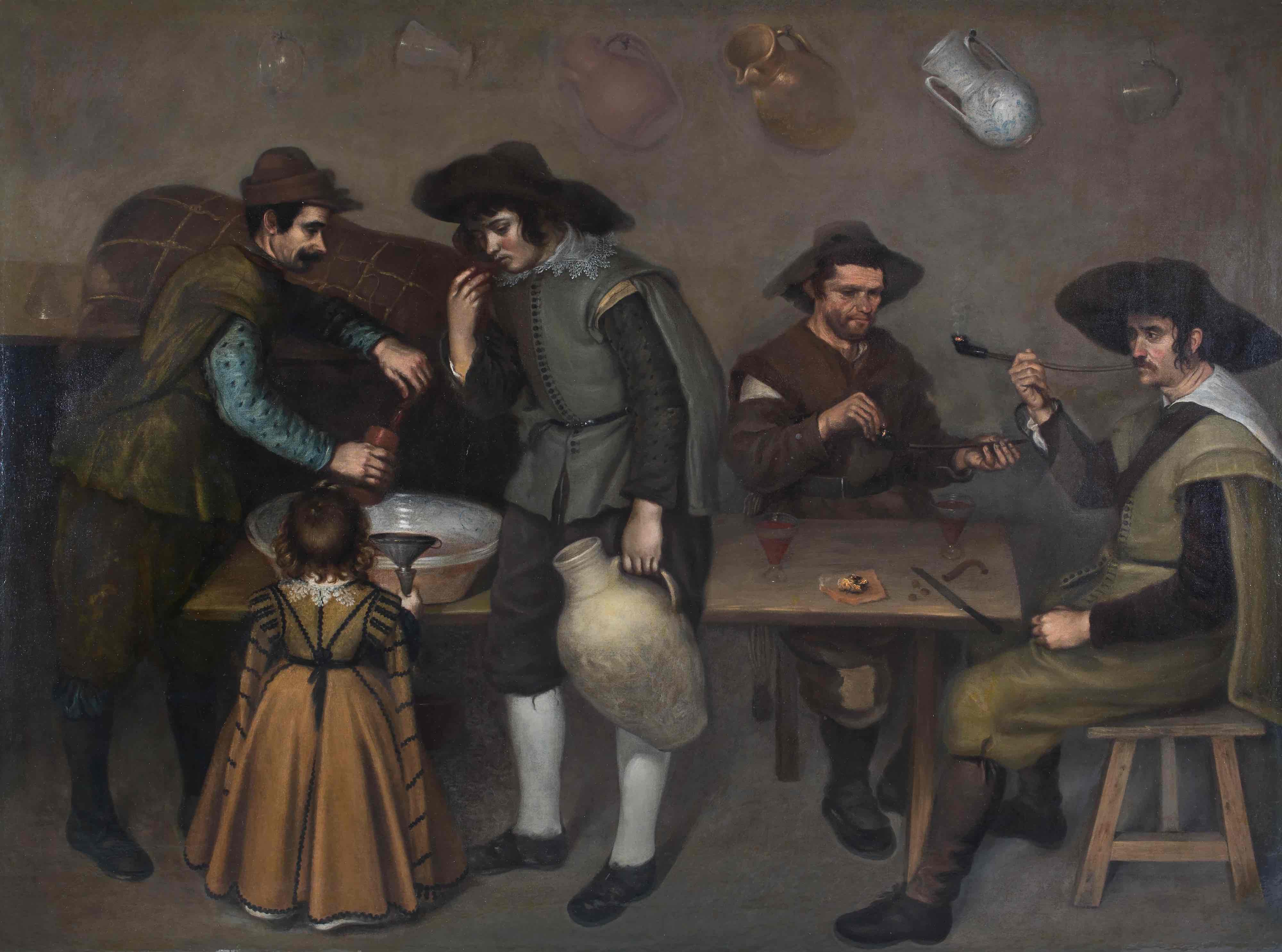LA TABERNA (THE TAVERN)
La Taberna is one of the most outstanding works in the Pontevedra Museum's collection of Baroque painting. It depicts a scene from everyday life that recreates the atmosphere inside a humble tavern, a theme of taverns and inns associated to the still life genre, recurrent in 17th-century European painting.
As it lacks a signature, its authorship was attributed to different artists: first to Murillo, later to the Ourense painter Antonio de Puga, and then to an anonymous painter from Madrid, a follower of Velázquez or of the generation thereafter, whom Eric Young called “Pseudo-Puga”, to differentiate him from the real Puga. The work of Roberto Contini (2016) and Gonzalo Hervás (2017) has once again made it possible to attribute this work to Antonio de Puga and therefore to date its execution to the time of this artist. In addition to its archaically-realistic atmosphere, the latter attribution is based on the type of clothing and above all because both La Taberna (The Tavern) and El Afilador (The Knife Grinder) were mentioned in the inventory of the collection of Philippe Charles d'Aremberg, Duke of Aarschot, when he died in 1640.
The Ourense painter Antonio de Puga (1602-1648) was a contemporary artist of Velázquez with his own studio in Madrid. He was renowned as a painter of landscapes and portraits in the Golden Age. His biography was rescued from oblivion in the 1950s by María Luisa Caturla.
The only verified work of his is San Jerónimo penitente, signed and dated 1636.
Among the most important paintings attributed to him, all of them unsigned, are El afilador (The Knife Grinder - Hermitage Museum, Saint Petersburg), El aceitero (The Oil Merchant - Goya Museum, Castres) and La sopa de los pobres (The Soup Kitchen - Ponce Museum, Puerto Rico), which together with La Taberna Hervás (The Hervás Tavern) were placed in the collection of Philippe Charles d'Aremberg, Duke of Aarschot, on his death in 1640.
Another work preserved in the Museum attributed to Antonio de Puga is an oil painting of an old woman seated, deposited by the Prado Museum.
Label
More information
In addition to La Taberna (The Tavern) and Anciana sentada (Old Woman Seated), the Museum has a collection of Baroque works from the 17th and 18th centuries, including works attributed to masters such as Ribalta, Ribera, Zurbarán, Murillos or their disciples, and above all the collection of still lifes and vases.



